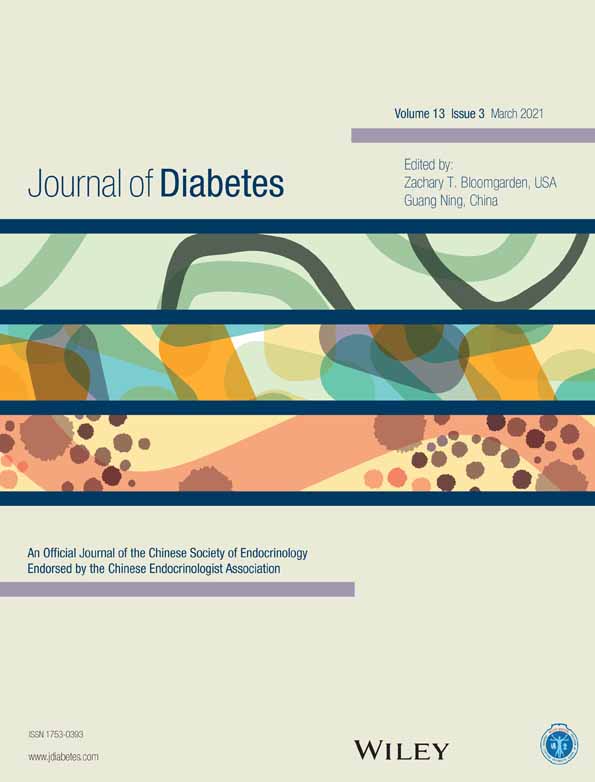Postload glucose spike but not fasting glucose determines prognosis after myocardial infarction in patients without known or newly diagnosed diabetes
负荷后血糖峰值而不是空腹血糖决定未知或新发糖尿病患者心肌梗死后的预后
Abstract
enBackground
The effect of postload glucose spikes (PGS), the difference between 2 hour post-load plasma glucose (2hPLPG) and fasting plasma glucose (FPG), on post–myocardial infarction (post-MI) prognosis in nondiabetic patients is unexplored.
Methods
This is a retrospective cohort analysis of 847 nondiabetic post-MI survivors who underwent a predischarge oral glucose tolerance test (median PGS: 2.4 mmol/L). Patients were divided into the unmatched groups 1 and 2 (PGS ≤ and > 2.4 mmol/L) and the propensity score-matched groups 1M and 2M (355 pairs assembled from the overall cohort), and these groups were compared. Major adverse cardiac events (MACE: death and nonfatal reinfarction) were recorded during follow-up (median: 3.4 years). Event-free survival was compared by the Kaplan-Meier method. Multivariate Cox proportional hazards regression determined the predictors of MACE. C-statistics (change in area under the curve, δAUC), continuous net reclassification improvement (NRI>0), and integrated discrimination improvement (IDI) were used to compare models.
Results
The number of MACE was higher in groups 2 (27.3% vs 14.2%, P < .001) and 2M (24.5% vs 15.5%, P < .001). Event-free survival was worse in groups 2 (hazard ratio [HR] 2.01; 95% CI, 1.49-2.71; P < .001) and 2M (HR 1.63; 95% CI, 1.17-2.27; P = .004). PGS independently predicted MACE-free survival in the whole (HR 1.16; 95% CI, 1.06-1.26; P = .002) and matched cohort (HR 1.12; 95% CI, 1.02-1.24; P = .021). PGS, but not FPG or 2hPPG, improved the predictive performance of the base model (δAUC 0.013, P = .046), with greater improvement seen when PGS was added and compared to 2hPPG (δAUC 0.005, P = .034; NRI>0 0.2107, P = .013; IDI 0.0042, P = .046).
Conclusion
PGS is a better predictor of post-MI prognosis than 2hPPG in nondiabetic patients.
摘要
zh背景
负荷后血糖峰值(PGS),即负荷后2h血糖(2hPLPG)与空腹血糖(FPG)之差,对非糖尿病患者心肌梗死后(Post-MI)预后的影响尚不清楚。
方法
对847名接受出院前口服葡萄糖耐量试验(中位数PGS:2.4 mmol/L)的非糖尿病心肌梗死后幸存者进行回顾性队列分析。将患者分为PGS≤和>2.4mmoL/L的组1和组2,以及倾向得分匹配组1M和2M(从总队列中收集355对),并对这些组进行比较。随访期间记录主要不良心脏事件(MACE:死亡和非致命性再梗死)(中位随访时间:3.4年)。无事件生存率比较采用Kaplan-Meier法。多因素Cox比例风险回归确定MACE的预测因素。采用C-统计量(曲线下面积变化,δAUC)、连续性重分类改善指标(NRI>0)和综合辨别改善值(IDI)对模型进行比较。
结果
组2(27.3%比14.2%,P<0.001)和2M组(24.5%比15.5%,P<0.001) MACE发生率较高。无事件生存率在组2(危险比[HR]2.01;95%CI,1.49~2.71;P<0.001)和2M组(HR 1.63;95%CI,1.17~2.27;P=0.004)中也更差。PGS能独立预测整体(HR 1.16;95%CI,1.06-1.26;P=0.002)和匹配队列(HR 1.12;95%CI,1.02-1.24;P=0.021)的无MACE生存率。PGS而不是空腹血糖FPG或2hPLPG可改善基础模型的预测性能(δAUC 0.013,P=0.046),当加入PGS指标后,相对2hPLPG来说预测模型有更大的改善(δAUC 0.005,P=0.034;NRI>0 0.2107,P=0.013;IDI 0.0042,P=0.046)。
结论
在非糖尿病患者中,PGS比2hPLPG更能预测MI后的预后




